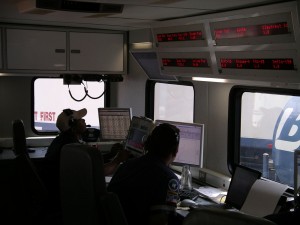The NAPE Expo is a North American event with some international influence, which features key players in the oil and gas industry. The business conference theme for 2014 was sustainability in the U.S. oil and gas industry.
The conference touched on key issues such as hydraulic fracking, regulatory and environmental issues, operational procedures and technological innovations.
Hydraulic Fracking and the Issue of Water
Multiple speakers put a spotlight on the practice of hydraulic fracturing, and water sustainability. Here are some of their comments:
- Former Secretary of the Interior, Ken Salazar, said, "I believe hydraulic fracking is safe... there is not a single case where fracking has caused an environmental problem for anyone."
- David Blackmon, Dir. FTI Consulting, said, "the biggest issue by far facing the industry today is water."
- 880 Trillion Gallons of brackish water in Texas could potentially be used for development in 2 - 3 years according to Blackmon
- "The Eagle Ford doesn't flow back as much water as other areas, and it looks like its going to be at a net water deficit for some time," said Andrew Slaughter, VP, Upstream Research, IHS
Regulations and Environmental Issues
- Effective January 1st, new casing and cementing regulations went into effect for all Texas Operators
- Texas Rail Road Commissioner, Christi Craddick, to Texas Operators: "we'll be implementing and enforcing flaring rules [in February 2014]." Read more at rrc.tx.state.us
- David Blackmon, Dir. FTI Consulting, said, "the Endangered Species Act could potentially have a significant (detrimental) impact on business in [Texas]."
Operational Procedures and Using Technology for Sustainability
- Robert Turnham, CEO, Goodrich Petroleum on business strategy: "We move early, identify opportunities and take the risk up-front. If you move early, then you enjoy lower royalty burdens straight off the top."
- Apache converting waste gas to electricity for field grid usage
- General industry focus on artificial lift technology in shale drilling to quickly drain reservoirs
- New diverter technology being utilized to make shale drilling more economic in marginal wells
Other Notable Comments from the Conference
- Luke Keller, VP, BP America, said, "[the] U.S. could achieve energy independence by 2035."
- "$2000 financial benefit to every American household by 2015 due to unconventional drilling of natural gas," according to Don McClure, VP, Government Stakeholder Relations and Legal, EnCana Oil and Gas USA
- "The U.S. has close to 200 - 300 years of hydrocarbon reserves," according to Charles McConnell, Rice University
- Industry encouraged to support better outreach and education initiatives via social media outlets
Learn more about NAPE by visiting napeexpo.com


